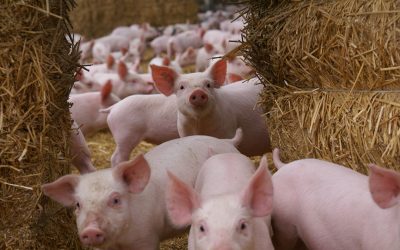Different mycotoxins
Aflatoxins are produced by the common soil microorganism Aspergillus flavus. This mould is prevalent among feeds in the southern U.S., particularly in corn, but may occur in other grains when conditions are hot and dry, growing best between 30 and 40°C. A. flavus commonly grows during the storage of summer crops, but can also affect wheat and barley. Aflatoxins may be produced within 2 to 6 weeks of infestation.
Fusarium moiliforme. However, fusarium is a very common organism that is often
present with no production of fumonisin. This fungus occurs in most temperate
regions of the world. It is most likely to be seen before harvest. Sprinkler
irrigation may heighten risk of fusarium infection.
Trichothecens
comprise a group of toxins that share a common chemical structure, though
produced by a variety of fungi particularly Fusaria and related genera. Purple
red moulds, occasionally detected in corn, wheat and soybeans, signal the
presence of tricothecens.
Ochratoxins are produced by Aspergillus and
Penecillium fungi. Ochratoxin A is a common contaminate of barley and occurs in
cool, wet conditions.
Zearalenone is produced by several Fusarium moulds
under cool, wet conditions. It grows on grain before harvest, but can worsen in
storage. Insect damage increases the susceptibility of crops. Infected corn may
be identified by dark purple discoloration and affected wheat by pink
tips.











